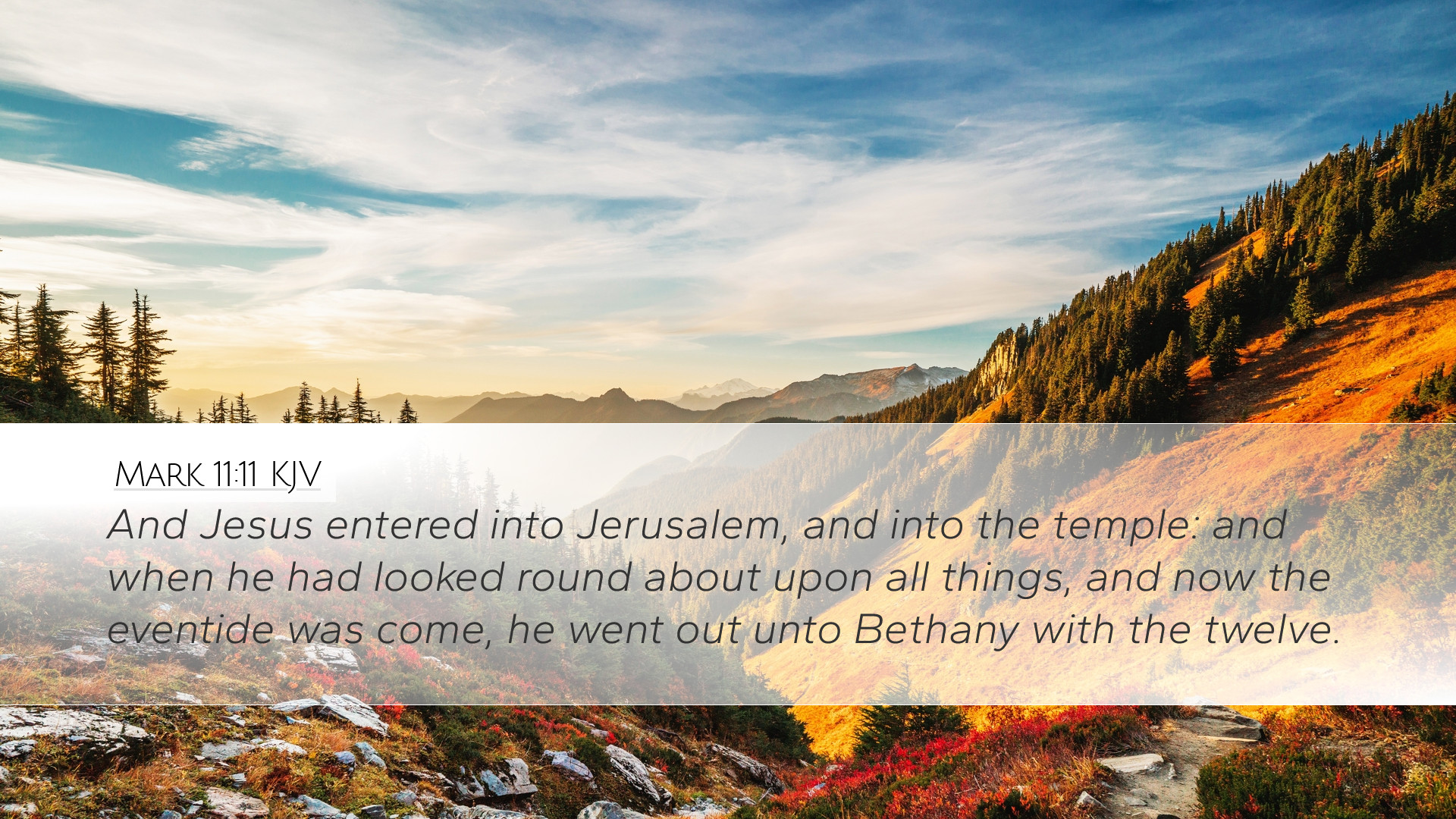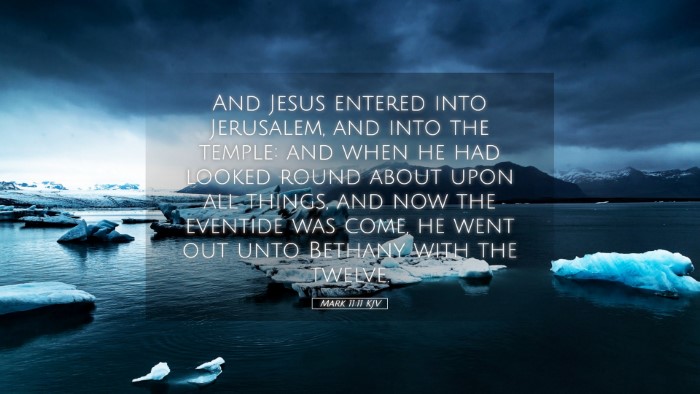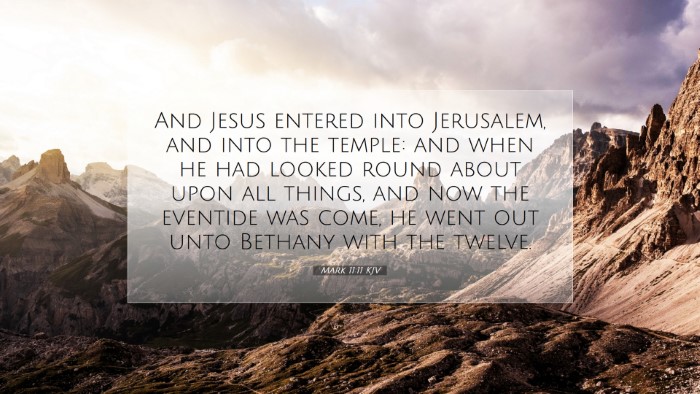Commentary on Mark 11:11
Mark 11:11 states:
"And Jesus entered into Jerusalem, and into the temple: and when he had looked round about upon all things, and now the eventide was come, he went out unto Bethany with the twelve."
Introduction
This verse marks a significant moment in the Gospels. As part of the narrative leading to the crucifixion and resurrection, this entry into Jerusalem captures not only Jesus’ messianic identity but also foreshadows the impending challenges He would face. Scholars and theologians regard this moment as laden with theological implications, reflecting on themes of authority, prophecy, and fulfillment.
Contextual Analysis
In examining Mark 11:11, it is crucial to understand its immediate context within the Gospel of Mark and the events that precede it. Jesus had just entered Jerusalem in a triumphant procession that fulfilled Zechariah 9:9, wherein He was hailed as King. This entry sets the stage for subsequent confrontations with the religious elites and His teaching in the temple.
Matthew Henry's Insight
Matthew Henry provides a detailed reflection on the significance of Jesus entering the temple. He notes that the temple represents not just a physical space but the heart of Jewish worship and the location of God's presence. Henry emphasizes that Jesus' inspection of the temple serves as a precursor to His later cleansing of it, hence illustrating His authority over both the temple and its worship traditions.
Albert Barnes' Commentary
Albert Barnes emphasizes the intentionality of Jesus’ actions. According to him, the fact that Jesus looked around at all things signifies His contemplative assessment of the religious practices occurring within the temple. Barnes points out that Jesus’ withdrawal to Bethany symbolizes a separation from the corrupt practices that had overtaken the temple, indicating His discontent with the current state of affairs.
Adam Clarke's Perspective
Adam Clarke presents a more detailed exploration of the logistics surrounding Jesus' visit to the temple. He comments on the time of day—'evening'—noting the significance of this quiet period for reflection. Clarke connects this with the prophetic nature of Jesus’ actions, asserting that this moment was part of a larger divine plan that highlighted both entering and soon overturning the status quo.
Thematic Reflections
- The Significance of the Temple:
The temple as a symbol of God's dwelling is central to understanding this passage. The presence of Jesus within this sacred space underscores His divine authority. His examination of the temple signifies not only a physical visitation but a divine audit of spiritual life.
- Jesus' Authority:
Following the triumphant entry, Jesus’ actions underscore His authority as the Messiah. His careful observation demonstrates not just oversight but an active engagement with the spiritual realities of His time.
- Foreshadowing of Conflict:
The quietness of the evening before His next day's actions reveals a tension that must be acknowledged. It anticipates the conflict and eventual crucifixion that is central to the Christian faith. This moment serves as a narrative pivot leading into the events of Holy Week.
- Call to Reflection:
For believers, this passage invites a personal reflection on our spiritual practices. Are we adhering to the heart of worship as represented in the temple, or have our practices strayed from their intended purpose?
Conclusion
Mark 11:11 serves as a poignant reminder of Jesus’ mission and His assessment of religious life in Jerusalem. The commentaries of Henry, Barnes, and Clarke collectively highlight the complexity of this moment and its lasting implications for believers. As pastors, students, theologians, and scholars delve into this verse, they are invited not only to reflect on the historical and theological dimensions but also to consider the contemporary relevance of Christ’s actions and teachings.


